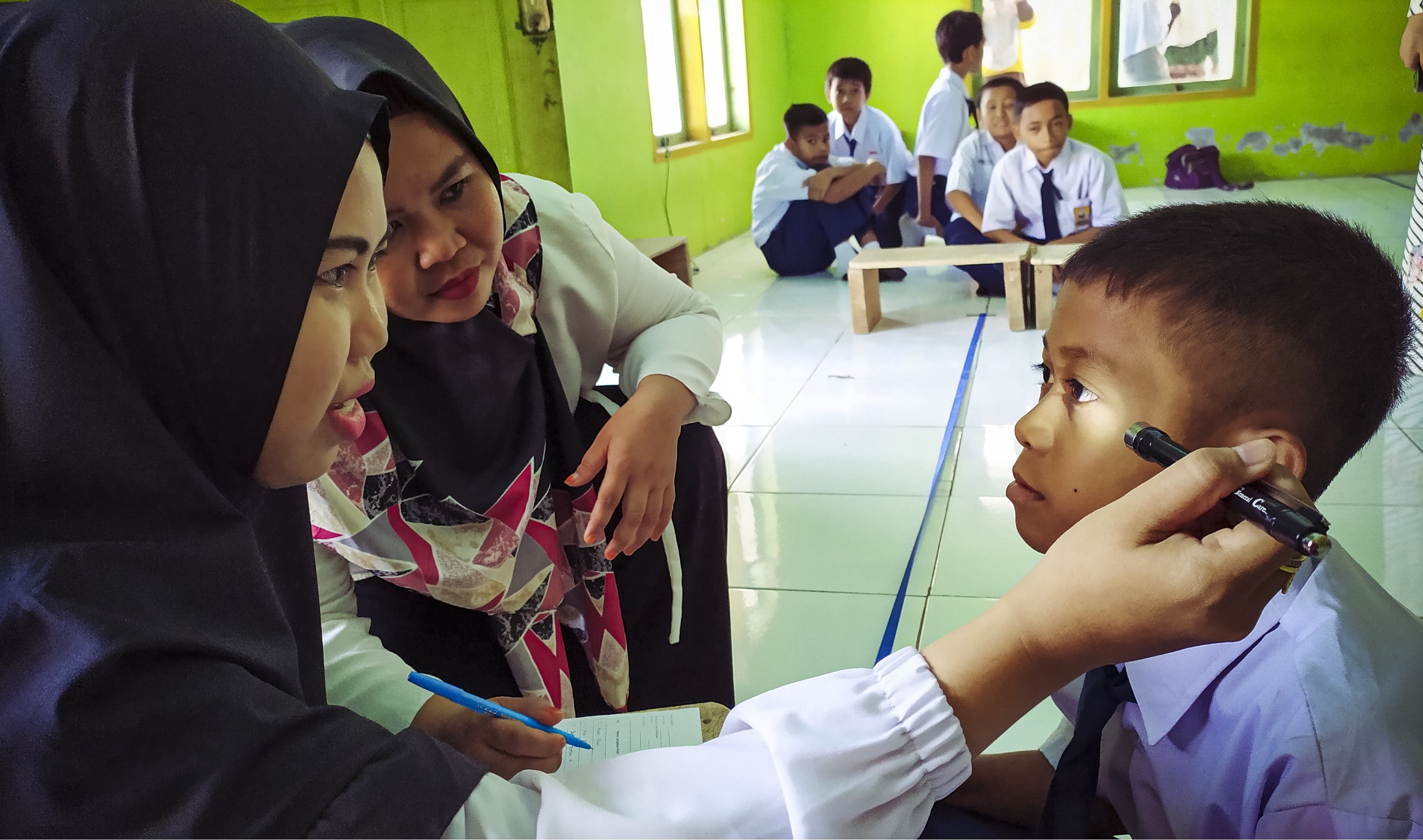Test your knowledge and understanding

Related content
This page is designed to help you to test your own understanding of the concepts covered in this issue, and to reflect on what you have learnt.
We hope that you will also discuss the questions with your colleagues and other members of the eye care team, perhaps in a journal club. To complete the activities online – and get instant feedback – please visit www.cehjournal.org
Answer TRUE or FALSE for every part of all questions.
Question 1
The following eye examinations can be performed by a trained eye health worker (who is not a doctor) who has suitable equipment:
a. Measurement of visual acuity
b. Indirect ophthalmoscopy
c. Refraction for presbyopia
d. Measurement of intraocular pressure using a Schiötz tonometer
e. Examination of the visual fields
Question 2
The following can be performed using a torch:
a. Examination of the pupil light reflex
b. Examination of the conjunctiva
c. Diagnosis of trichiasis
d. Examination of the optic disc
e. Examination of the cornea for a foreign body
Question 3
The Arclight:
a. Requires batteries
b. Costs about £30
c. Can be used to examine the optic disc
d. Can only be used by doctors
e. Can be used to examine the ears
Question 4
Which of the following statements are TRUE ?
a. A baby with a white pupil should be referred immediately
b. Reading glasses can be given to a 50-year-old patient with 6/60 vision in both eyes
c. A 50-year-old patient who has an in-turned eye on cover test and complains of double vision probably has a squint from childhood
d. A patient who complains of sudden unilateral painless loss of vision should have their pupil reactions tested and fundi examined following dilation of the pupils
e. Community health workers must refer all eye patients to a specialist
ANSWERS
1. a, c, d and e are TRUE. Indirect ophthalmoscopy is usually done by ophthalmologists.
2. d, is FALSE. a, b, c and e are TRUE.
3. c and e are TRUE. a, b and d are FALSE. It is solar powered and costs about £10 (US $13). It can be used by any trained health worker.
4. a. TRUE. It may be cataract or retinoblastoma, both of which require urgent specialist attention. b. FALSE. The cause of poor distance vision needs to be found before considering giving reading glasses. c. FALSE. Double vision implies a recent muscle or nerve problem, e.g,. sixth nerve palsy. d. TRUE. Sudden vision loss in a non-painful eye may be due to diseases of the retina or optic nerve. e. FALSE. A community health worker can be trained to carry out a basic eye examination and diagnose and treat common eye conditions such as conjunctivitis.
